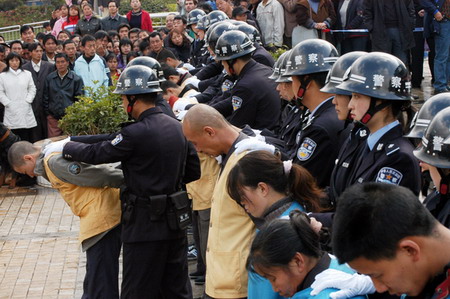����רҵ�����пƲ��п�ҽԺ-������Э��ҽԺ����JiXiHeyi,�����ļ�ҽԺ��Ƥ���Ч����,���������ҽԺ������й��,��������Ƥ����Ǯ,���ֿ��п��ļ�ҽԺ���,����������й �ļ�ҽԺ��,��������������й��
��������רҵ�����пƲ��п�ҽԺ���ּ���ǰ���������Ʒ�ʽ,���ָ��Ƥ��������,�������ư�Ƥ��ͷ���ĸ�ҽԺ,���ְ�Ƥ��ͷ����������ҽԺ,�����ļ�ҽԺ���пƺ�,��������й�ò���,��������֧ԭ������������
���� ����
����Europe is proposing a ban on single-use plastic items such as cutlery, straws?and cotton buds in a bid to clean up the oceans.The European Commission wants to ban 10 items that make up 70% of all litter in EU waters and on beaches. The list also includes plastic plates and drink stirrers.The draft rules were unveiled Monday but need the approval of all EU member states and the European Parliament. It could take three or four years for the rules to come into force.The legislation is not just about banning plastic products. It also wants to make plastic producers bear the cost of waste management and cleanup efforts, and it proposes that EU states must collect 90% of single-use plastic bottles by 2025 through new recycling programs.The European Commission estimates that these rules, once fully implemented in 2030, could cost businesses over �3 billion (.5 billion) per year. But they could also save consumers about �6.5 billion (.6 billion) per year, create 30,000 jobs, and avoid �22 billion (.6 billion) in environmental damage and cleanup costs.The Rethink Plastic Alliance -- an association of environmental organizations -- called the proposals "a leap forward in tackling plastic pollution" but criticized some perceived shortcomings.The proposals do not set targets for EU countries to reduce the use of plastic cups and food containers, it said."This could result in countries claiming they are taking the necessary steps as long as any reduction is achieved, regardless of how small," the alliance said in a statement.The proposal also faced criticism from the plastics industry.Plastics Europe, which represents manufacturers, said it supported the "overarching objective" of the proposal but said there must be more resources dedicated to "waste management" to ensure better collection of used plastic."Plastic product bans are not the solution," it said in a statement, and noted that "alternative products may not be more sustainable."On a global basis, only 14% of plastic is collected for recycling. The reuse rate is terrible compared to other materials -- 58% of paper and up to 90% of iron and steel gets recycled.Research shows there will be more plastic than fish by weight in the world's oceans by 2050, which has spurred policy makers, individuals and companies into action.Last month a group of more than 40 companies including Coca-Cola, Nestle, Unilever and Procter & Gamble pledged to slash the?amount of plasticthey use and throw away in the United Kingdom.Starbucks also announced in March it was launching a million grant challenge to solicit designs for a cup that's easier to recycle. 2689
����ESCONDIDO, Calif., (KGTV)-- Residents in Escondido shared their concerns Wednesday about the flooding on Country Club Drive.Neighbors said after every rain event, the street floods and closes, which creates not only an inconvenience but a safety hazard. There is no stop sign on Country Club Drive. But Jason Farr is at a stand-still. "I can't get in and out of our neighborhood," Farr said. Check 10News Pinpoint Weather ConditionsFarr and his family moved into the neighborhood a few months ago. They have already experienced the notorious flooding. Farr's concern is that Country Club Drive is the only way in and out of his community."If emergency crews need to get here�� If there are a couple of feet of water on top of the bridge, that's one thing, but if there's more like I saw yesterday, they just won't be able to get in and out," Farr said. He said he has several elderly neighbors who no longer have the strength or speed to evacuate at once. The flooding also trap his children from getting to school. "We have to be constantly be deciding if we want to bring our kids to school. Because I do not feel comfortable dropping my kids off to school and them not being able to be picked up," Farr said. While the water receded overnight, by 8:30 AM Wednesday the water crested back over the road. Farr said his neighbors told him that the severity of the problem got much worse as new developments sprouted into the once lonely neighborhood. RELATED: San Diego storm brings rain, snow, flooding��It's changing the watershed, changing the drainage. All the drainage is being funneled down hill,�� Farr said. ��We��re just the end of the hill, and we're paying the price for it."Farr said while this is a flooding issue now, come summer, this one way in, one way out street to his community will become a fire hazard. He has voiced his concerns to the county. So far, he has not received a response. 1910
���� ����
����ESCONDIDO, Calif. (KGTV) �� As San Diego County rolls back again into the more-restrictive purple tier, the city of Escondido is coming together to make sure their small businesses survive the newest rollback.In Escondido, Carol Rogers is involved with the Downtown Business Association and the Chamber of Commerce, plus she also owns Stone and Glass, a glass blowing shop. She said everyone has been feeling the impact for the past eight months, but they��re finding ways to adapt.For her glass store, she said online sales have been what kept her afloat.RELATED: San Diego County moves into California's COVID-19 purple tier, new state data shows��Our online sales are phenomenal. It��s what��s kept us in business. It is the only thing that��s kept us in business,�� said Rogers.She said she and the organizations she works with have created different plans to help all small businesses. During the summer, they closed down a lane of traffic along the main street and added cement barricades, creating a space for stores to add tables to the sidewalks. Some types of businesses were able to use the space, but others were not.��What we found is the restaurants did it. I works for the restaurants, but retail is not using the space,�� she said, discussing the outdoor sidewalk addition.In the spirit of unity, they decided to not waste the outdoor space, so Rogers created an art walk that happened Saturday, Nov. 14. Artists and creators were able to move into unused street space and host pop-up shops, giving them business that has been missing since their local Second Saturday stopped in March.In addition to the stores moving outside and artists popping up for a Saturday afternoon, the community has also stepped up to add life to the cement barricades that block off the outdoor sidewalk space. Starting in the summer, a few cement blocks were painted by artists, and that has continued. Now, Grand Avenue is lined with multi-colored pieces of art.��There��s been professional artists, there��s been people that just want to paint, there��s children,�� said artist Tristan Pittard, who was working on his cement canvas Saturday.Pittard said the art is an additional motivator for people to visit the area and support local businesses.��Art in general affects peoples psyche and public art is important for that because people might not be exposed to art otherwise,�� said Pittard.For Rogers, the combination of the art walk with the painted cement shows the unity of the people, and gives her hope that Escondido will survive another rollback. She said she hopes the art walk will become a monthly event.��The more that we can do this, we believe the more people will come. This makes people comfortable. We��re outside. We��re far apart. It��s safe,�� she said. 2760
����ENCINITAS, Calif. (KGTV) -- Nearly 5,000 runners woke up early Sunday morning to enjoy a run with a view of the ocean. Runners laced up for the second ever Encinitas half-marathon. The course took runners through Leucadia, Encinitas, Cardiff and Solana Beach. Seven and a half miles of running with a gorgeous view of the ocean. Nearly ,000 worth of prizes were up for grabs for the fastest runners. Proceeds from the half-marathon go to help local ocean conservation projects. The winner finished in an hour and seven minutes. 559
����Experts say the coronavirus pandemic has led to a decline in both planned and unplanned pregnancies.Experts added that people are meeting less because of COVID restrictions, job loss, and the uncertainty of the future has caused people to hit pause on having kids.On Wednesday, Modern Fertility published a survey that found out of nearly 4,000 people, 30% of them said they had changed their fertility plans due to the pandemic.In March, Modern Fertility found that 31% of those surveyed had decided to change their family planning timelines.Several reasons people gave behind their decision to delay having children was ��it doesn��t seem like a good time to bring kids into the world,�� ��I need to improve my financial position,�� and ��I��m worried about contracting COVID-19.��On Thursday, the Brookings Institute projected that Americans would see 300,000 fewer births next year. 886


